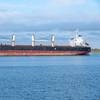(Photo Credit: Richard Grable)
Cruise vessels will take center stage at the SMM 2004, 21st Shipbuilding, Machinery & Marine Technology, International Trade Fair Hamburg, which is to take place at the Hamburg Fair site from 28 September to 2 October.
Cruising and cruise vessel construction have had to maneuver in difficult waters in the past year. The very active ordering activity of recent years has slowed down to become steady, dependable growth. That, explains Peter Fetten in an interview, is because growth is a part of the strategy of the big American cruise lines; Peter Fetten is Vice-President Design and Newbuildings at Royal Caribbean Cruise Limited, the world's second largest cruise group.
The three major cruising companies, that is Carnival Corporation and Royal Caribbean Cruise Limited from the USA, and Star Cruises from Malaysia, are placing a regular stream of orders for newbuildings. The favorite addresses are European shipyards in Italy, Finland, France and Germany, such as Fincantieri, Kvaerner Masa Yards, Alstom Chantiers de l'Atlantique und Meyer Werft. Even if the three leading cruise companies have acquired a large number of smaller companies in the past few years (e.g. the Carnival empire comprises ten cruise lines, including Cunard and P&O), there is still space for cruise lines with specialty products in niche markets, notes Mark Conroy, Chairman of Cruise Lines International Association and President of Radisson Seven Seas Cruises. He likewise forecasts growth in the cruise market over the next few years, sharing Fetten's expectations. There are 44 million Americans who have planned to go on a cruise in the next 3 years. And the scene is set for growth in the near future in Europe and Japan, too.
But the ships themselves will not get any bigger. The dimensions of the Queen Mary 2, launched at the beginning of 2004, are the limit in terms of size, says Peter Fetten - for reasons of maneverability in the favorite cruise areas alone.
Subscribe for
Maritime Reporter E-News
Maritime Reporter E-News is the maritime industry's largest circulation and most authoritative ENews Service, delivered to your Email five times per week










